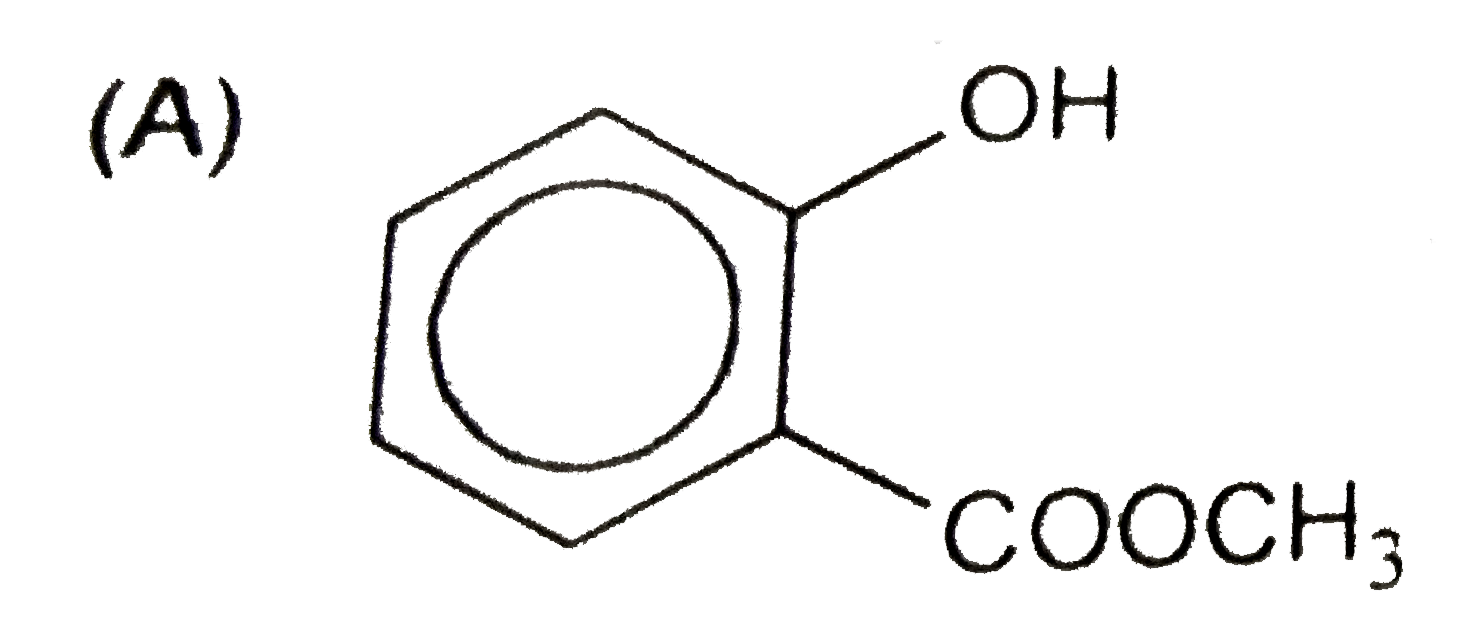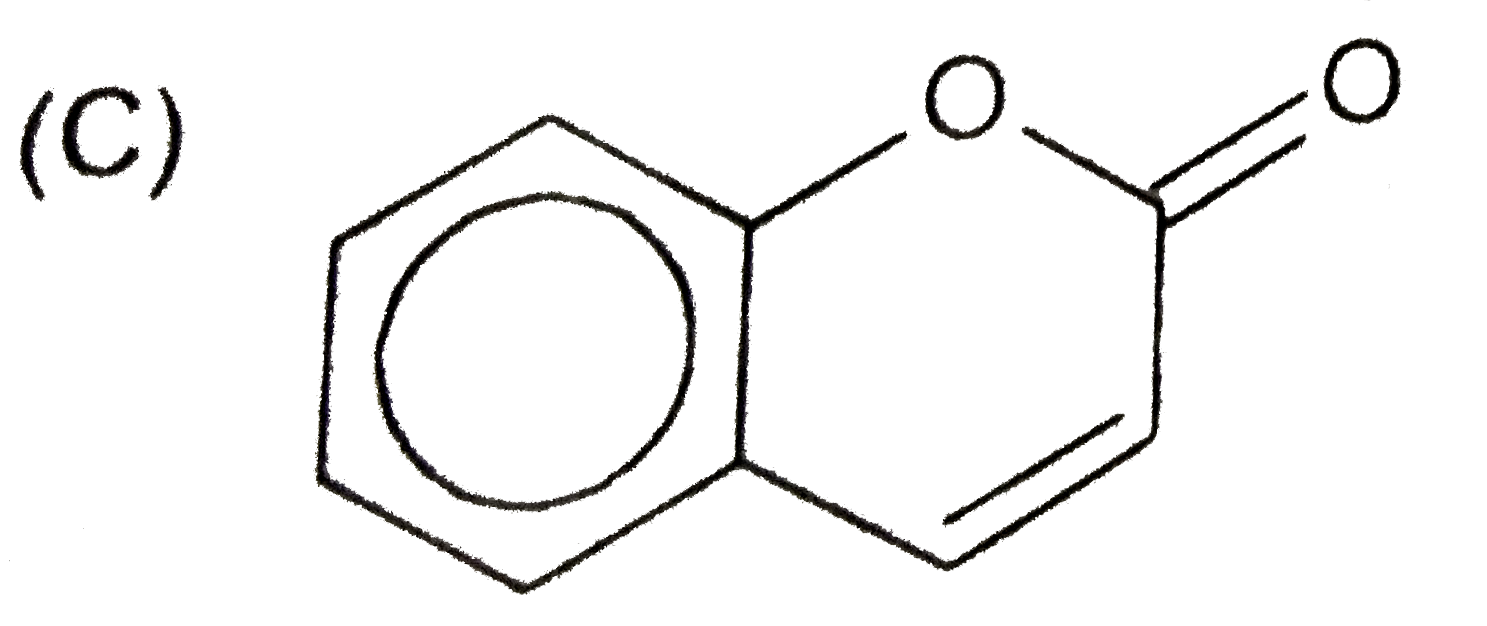When o-hydroxybenzaldehyde is heated with ethanoic anhydride in the presence of sodium ethanoate, compound formed during the reaction is?




The correct Answer is:D
To solve the question, we need to determine the compound formed when o-hydroxybenzaldehyde is heated with ethanoic anhydride in the presence of sodium ethanoate. Let's break down the steps involved in this reaction.
Step 1: Identify the Reactants
- The first reactant is o-hydroxybenzaldehyde, which has the structure:
C6H4(OH)(CHO)
where the hydroxyl group (-OH) is at the ortho position relative to the aldehyde group (-CHO).
- The second reactant is ethanoic anhydride, which has the structure:
(CH3CO)2O
- The third reactant is sodium ethanoate (sodium acetate), which has the structure:
CH3COONa
Step 2: Formation of the Intermediate
When o-hydroxybenzaldehyde is treated with sodium ethanoate, the hydroxyl group can form a sodium salt:
C6H4(OH)(CHO)+CH3COONa→C6H4(ONa)(CHO)+H2O
This results in the formation of the sodium salt of o-hydroxybenzaldehyde.
Step 3: Reaction with Ethanoic Anhydride
Next, the sodium salt reacts with ethanoic anhydride. The lone pair of electrons on the oxygen of the sodium salt attacks the carbonyl carbon of ethanoic anhydride, leading to the formation of an acylated product:
C6H4(ONa)(CHO)+(CH3CO)2O→C6H4(OCOCH3)(CHO)+NaOH
This results in the formation of o-hydroxybenzaldehyde acetate.
Step 4: Final Rearrangement
The product formed is unstable due to the negative charge on the electronegative oxygen. Therefore, a rearrangement occurs, leading to the final product:
C6H4(OCOCH3)(CHO)→C6H4(C=O)(C=CH2)
This final product can be identified as o-hydroxybenzaldehyde acetate.
Conclusion
The compound formed during the reaction of o-hydroxybenzaldehyde with ethanoic anhydride in the presence of sodium ethanoate is o-hydroxybenzaldehyde acetate.
- The first reactant is o-hydroxybenzaldehyde, which has the structure:
C6H4(OH)(CHO)
where the hydroxyl group (-OH) is at the ortho position relative to the aldehyde group (-CHO).
- The second reactant is ethanoic anhydride, which has the structure:
(CH3CO)2O
CH3COONa
When o-hydroxybenzaldehyde is treated with sodium ethanoate, the hydroxyl group can form a sodium salt:
C6H4(OH)(CHO)+CH3COONa→C6H4(ONa)(CHO)+H2O
This results in the formation of the sodium salt of o-hydroxybenzaldehyde.
Next, the sodium salt reacts with ethanoic anhydride. The lone pair of electrons on the oxygen of the sodium salt attacks the carbonyl carbon of ethanoic anhydride, leading to the formation of an acylated product:
C6H4(ONa)(CHO)+(CH3CO)2O→C6H4(OCOCH3)(CHO)+NaOH
This results in the formation of o-hydroxybenzaldehyde acetate.
The product formed is unstable due to the negative charge on the electronegative oxygen. Therefore, a rearrangement occurs, leading to the final product:
C6H4(OCOCH3)(CHO)→C6H4(C=O)(C=CH2)
This final product can be identified as o-hydroxybenzaldehyde acetate.
The compound formed during the reaction of o-hydroxybenzaldehyde with ethanoic anhydride in the presence of sodium ethanoate is o-hydroxybenzaldehyde acetate.
Similar Questions
Knowledge Check
- Question 1 - Select One
In the presence of a catalyst, the heat evolved or absorbed during the reaction:
AincreasesBdecreasesCremains unchangedDmay increase or decrease. - Question 2 - Select One
In the presence of a catalyst, the heat evolved or absorbed during the reaction:
AincreasesBdecreasesCremains unchangedDmay increase or decrease. - Question 3 - Select One
In the presence of a catalyst, the heat evolved or absorbed during the reaction:
AincreasesBdecreasesCremains unchangedDmay increase or decrease.
What happens when propan-1-ol is treated with ethanoic acid in the presence of concentrated H2SO4?
View SolutionReaction of cyclohexanone with dimethylamine in the presence of catalytic amount of an acid forms a compound if water during the reaction is continously removed. The compound formed is generally known as
View SolutionIn the presence of a catalyst, the heat evolved or absorbed during the reaction ………. .
View SolutionDuring the electrolysis of sodium ethanoate, the gas liberated at cathode is :
View SolutionIn the presence of a catalyst, the heat evolved or absorbed during the reaction:
View Solution

